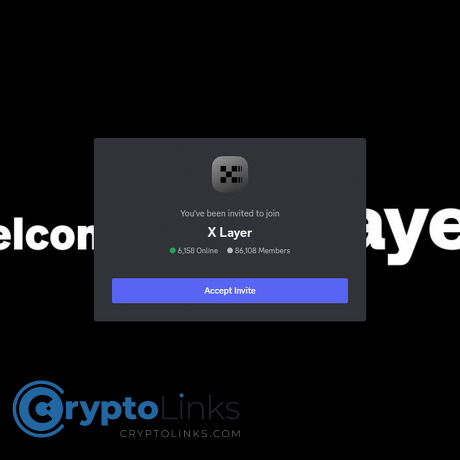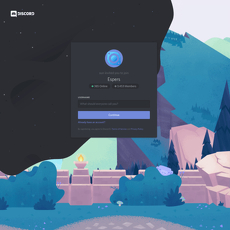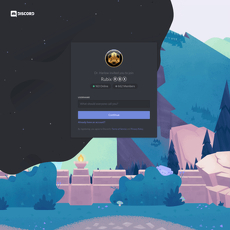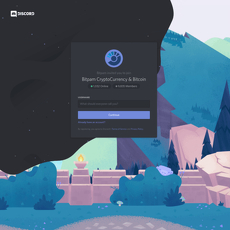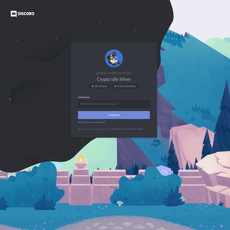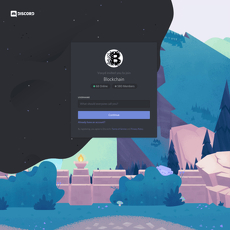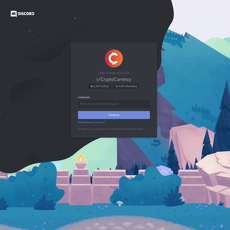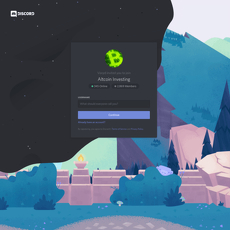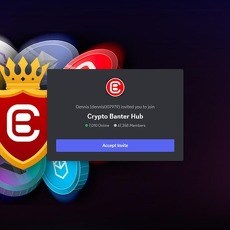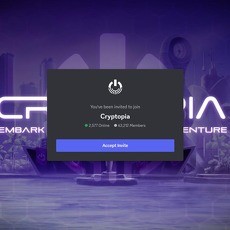X Layer Review
X Layer
www.linkedin.com
X Layer Discord Review Guide: What to Expect, How to Join, and the FAQ You Actually Need
Ever joined a crypto Discord and thought, “Where do I even start?” If you’re eyeing the X Layer server, I’ll help you get value fast—real updates, quick support, and safer participation—without getting lost in noise or hit by scammers.
Why most crypto Discords feel chaotic (and how that hurts you)
Let’s be honest: plenty of crypto servers are a mess. They look active, but they’re hard to navigate and easy to misuse. Here’s what typically goes wrong:
- Noise overload: 50+ channels, unclear names, and zero context. Important updates get buried under memes and shill posts.
- Fake “support” DMs: You join, and within minutes a fake mod DMs you a link to a “ticket portal” or “urgent patch.” Click that, and you’re in trouble.
- Missed rules and roles: Many servers hide key channels until you accept rules or pick roles. Newcomers think the server is empty and leave—or post in the wrong place and get ignored.
- Builders can’t find builders: Dev threads are hidden behind roles or buried under general chat, so good technical questions don’t get seen.
- Same questions, slow answers: Without a clean help flow, people repeat the same wallet/network issues. Mods burn out; users give up.
This isn’t just annoying—it’s risky. The FTC reports show social platforms are a major starting point for crypto scams, and Chainalysis notes bad actors adapt fast to whatever channel gets attention. Discord is prime hunting ground for impostors because new members expect help ASAP.
Real example: A new user joins, forgets to turn off DMs, and gets a “verification” link from a fake mod. The link requests wallet connection “to sync roles.” Five minutes later, assets are gone. This guide helps you avoid that exact trap.
Here’s what you’re getting from this guide
I’ll keep it simple and practical. No fluff. You’ll get:
- A clear map of the X Layer server: Which channels matter, why they exist, and when to use them.
- Role and notification setup that actually works: See the right rooms, cut spam pings, and stay updated without fatigue.
- A quick safety checklist: What to ignore, what to check twice, and how to keep your wallet and account clean.
- Must-know rule answers: Including Discord’s 18+ and NSFW policies so you don’t risk your account—or the server.
Who this guide is for
- Newcomers: You want legit updates and help, not spam.
- Holders and power users: You need announcements and support that don’t get lost in noise.
- Builders: You’re looking for the right rooms to ask technical questions, share progress, and meet collaborators.
- Curious lurkers: You want to keep tabs on X Layer without bathing in pings or DMs.
What X Layer is in plain English
X Layer is a layer-2 blockchain project with an active ecosystem and community presence on Discord. Think of it as a faster, cheaper environment for building and using on-chain apps, with the server acting as the hub for updates, support, events, and community projects. If you care about real-time info or want to build in the ecosystem, being in the right channels matters.
What you’ll walk away with
- Onboarding checklist: Join via https://discord.gg/xlayer, verify, set roles, and unlock the rooms you actually need.
- Security habits: DMs off by default, 2FA on, and no seed phrases—ever. Plus, how to verify links and staff.
- Trusted FAQ: Clear answers to common issues, including NSFW/18+ rules and quick fixes if you can’t see channels.
- Navigation confidence: You’ll know where to catch announcements, ask for help, and connect with builders—without wasting time.
Ready to join without the headaches? Up next, I’ll show you how to go from invite to fully set up in just a few minutes, including the exact channels to bookmark on day one. Want the quick route to the good stuff?
Onboarding in minutes: join, verify, and find the good stuff
I want you to get value the same day you join—no wandering, no spam, no mystery roles. Here’s the quickest, cleanest way to join https://discord.gg/xlayer, pass verification, and see the channels that actually matter.
“You don’t rise to the level of your goals. You fall to the level of your systems.” — James Clear
Set your system now, and the server will work for you instead of against you.
The invite, rules, and verification flow
- Hit the invite: Click Join. If you’re on desktop, it opens in the app or browser; on mobile, it’ll prompt the Discord app.
- Accept the rules (Membership Screening): You’ll see a panel with server rules. Scroll, read, and tap I understand or Accept. If you joined and see “You must accept the rules to talk,” check the gray banner at the top and click Complete.
- Verification step (captcha/bot): Most crypto servers use a verification bot. You’ll typically see a button like Verify or a channel titled #verify or #start-here.
Typical verification actions:
- Click the embedded Verify button and follow the prompt (simple puzzle or captcha).
- If the bot DM’s you for a code, temporarily allow DMs during verification, complete it, then turn DMs off again (guide here: Discord Safety & Privacy).
- Wait 5–30 seconds for the Verified role to apply. Your channel list should expand.
If you still don’t see channels after verifying:
- Look for a #get-roles or #choose-roles channel—roles can unlock whole categories.
- Click the server name (top-left) > Overview > check for “Membership Screening not completed” and finish it.
- Fully close and reopen the app, or leave and rejoin via the invite.
- Use a visible help room like #support or a ticket bot to ping staff with “Verified but no channels.”
Channels to bookmark on day one
- #announcements — High-signal updates from the team. Turn on Only @mentions so you don’t get spammed.
- #changelog or #release-notes — Feature drops, fixes, RPC changes—crucial if you’re using or building on the network.
- #status — Maintenance windows, incidents, and resolutions. Check here before assuming it’s “just you.”
- #official-links — Canonical site, docs, explorers, socials. Use this instead of clicking random DMs.
- #support or ticket category — Post user issues (wallet, RPC, bridging). Threads often get faster responses.
- #dev-help / #builders-lounge — For technical questions, SDK quirks, or feedback on tooling.
- #ecosystem-news — Partners, launches, and integrations across the network.
- #events / #ama-stage — Live sessions, AMAs, workshops. Good for real-time answers from the core team.
Pro tip: use channel pins for must-know posts (top-right pushpin). That’s where teams stash RPC endpoints, known issues, or setup guides.
Roles and why they matter (visibility, pings, access)
Roles aren’t just cosmetics—they control what you see and how often you’re pinged.
- Verified / Member: Base access to general channels.
- Announcements / News: Opt in if you want updates without living in the chat.
- Builder / Developer: Unlocks dev channels and occasional SDK/tooling pings.
- Ecosystem / Partner / Validator: Grants rooms relevant to your lane.
- Regional / Language: Localized support and meetups; pick only what you’ll use.
Choose the minimum set you truly want. Grabbing everything = noisy feed and missed signal.
Taming notifications (mute categories, follow only announcement feeds)
- Server-wide: Right-click the server icon > Notification Settings > set to Only @mentions. Toggle Suppress @everyone/@here.
- Channel-level: Click the bell icon in #announcements and select Only @mentions. Then mute chat-heavy channels you don’t need.
- Categories: Right-click a whole category (e.g., Community) and Mute for 24 hours or until you unmute.
- Mobile: Tap the channel name > Notifications > Mentions Only. In server settings, disable “Allow direct messages from server members.”
- Follow announcements (optional): If you run your own hub server, click Follow in #announcements to pipe updates into a private feed you control.
Notification fatigue is real. A simple setup now prevents the slow drip of distraction that kills focus.
Etiquette that gets you answers faster (formatting, search, thread replies)
- Search first: Type in:#support keyword or use the search bar with filters (has: link, from: user). You’ll solve half your issues this way.
- Use threads: When you ask a question, hit Reply in thread. It keeps helpers focused and your context intact.
- Provide useful context: OS, wallet version, RPC, transaction hash, what you tried, and screenshots (no private keys, ever).
- Format logs/code: Wrap JSON or error logs in triple backticks to keep it readable: ```json ... ```
- One issue per ticket: Don’t stack problems. Close resolved threads so others can learn from them.
- Don’t DM staff: Use public help channels or ticket bots unless a mod explicitly asks for a DM. It protects you from impersonators.
- Be concise and kind: Specific questions get specific answers. Say thanks—humans reply faster to humans.
Final setup tip: after verification, go to User Settings > Privacy & Safety and toggle off “Allow direct messages from server members.” That single switch cuts most scam attempts (Discord’s own safety docs recommend it), and you can still talk in public channels just fine.
You’re in, verified, and set up like a pro. But what’s the real payoff for sticking around—fast updates without ping overload, or help that actually solves problems? Let’s answer that next.
What you actually get from the X Layer Discord
I keep the server open in a pinned tab for one reason: it’s where signal lives. Instead of wading through a hundred tweets and Telegram forwards, I can check two channels, skim today’s status, and move on with real info. It saves hours each week and cuts my risk of missing something important.
“In crypto, speed without context is a tax. Context without speed is a museum.”
Here’s how the server actually helps day to day, whether you’re just watching updates or you’re building something on X Layer.
Announcements, roadmaps, and status updates
Expect a tight set of rooms for official news—usually labeled along the lines of announcements, roadmap, status, or ecosystem-updates. These are the ones I follow so I don’t miss anything that affects users or deployments:
- Releases and changelogs: New RPC endpoints, SDK updates, explorer improvements, fee changes, or sequencer upgrades. If you deploy or run bots, this is your early warning system.
- Maintenance and incidents: Planned downtime, degraded performance, or hotfix notes usually land here first. I glance at this before pushing any mainnet changes.
- Ecosystem expansions: Partner launches, integrations, and listings. Good for spotting tooling or liquidity you can actually use.
To stay informed without getting ping fatigue, I use this simple stack:
- Follow the announcements feed to your personal updates server (one-way noise filter).
- Mute most channels and set Notification Overrides so only announcements and incident updates ping me.
- Bookmark the status link if the server shares one, so I can sanity-check issues before blaming my code.
UX research (Nielsen Norman Group) backs this approach: clear labels + fewer interruptions reduce cognitive load and help you spot what matters faster. In practice, it turns crypto chaos into a predictable rhythm.
Help for users and builders
Support is split between quick Q&A rooms and a formal ticket flow. Typical labels are support, wallet-help, network-issues for users, and dev-help, builders-lounge, contracts, sdk for technical questions. What works best for me:
- Users: Share your wallet, network (testnet/mainnet), the exact error text, and a screenshot. If it’s a stuck transaction, include the hash.
- Developers: Give a minimal reproducible example: toolchain (Foundry/Hardhat), network, package versions, the failing snippet, and what you already tried.
Across open-source communities, issues with repro steps get answers faster and with fewer back-and-forths. It’s the simplest way to get unstuck quickly.
Before opening a ticket, I run a 60-second sanity checklist:
- Search the channel for your error string from the last 7 days.
- Check pinned messages for known issues or breaking changes.
- Peek at the status/announcements channel for anything related.
- If it’s a deploy/build issue, try it on testnet first and note the differences.
Nine times out of ten, that solves it—or at least helps me post a crisp question that gets a useful answer.
Events and AMAs: what to expect and how to prep good questions
Community calls, AMAs, and office hours are where you get context straight from the team and ecosystem partners. I treat these like tiny research sprints:
- Arrive with a one-sentence goal: “Confirm timeline for feature X” or “Understand fee dynamics after the last update.”
- Write two focused questions: One strategic, one practical. Example: “What’s the next priority for the sequencer?” and “Any guidance on gas estimation for contract type Y?”
- Keep repro-friendly details ready: Tool versions, networks, and a short code sample. If they ask, you look prepared.
Pro tip: If they offer recordings or summaries, drop them into your notes with dates and version numbers. Future-you will thank you when debugging months later.
Ecosystem showcase: finding partners, tools, and grants info
Watch for channels like ecosystem, launches, partners, grants, or jobs. This is where I discover real building blocks:
- Infrastructure: Explorers, indexers, RPC providers, bridges.
- Developer tools: SDKs, templates, monitoring dashboards.
- Programs: Hackathons, grants, and beta testing calls.
Quick vetting checklist I use before I commit to anything new:
- Official link posted by a staff role and mirrored in pins or a link-hub channel.
- Docs and GitHub are active and versioned; changelog isn’t stale.
- At least one credible integration or public reference I recognize.
The Stanford Web Credibility Project has shown that recency and clear ownership increase trust. In crypto terms: if the docs are updated and the links are consistent across channels, I’m way more likely to try it.
Quests, roles, and community activities that signal reputation
Roles aren’t just flair; they’re social proof you earn by being useful. Common paths:
- Quests and checkpoints: Platforms like Zealy/Crew3 or in-server quests to learn the stack, test features, or attend events.
- Contribution roles: Builder, Beta Tester, Bug Hunter, or Supporter for consistent quality help.
- Event-based roles: AMAs, workshops, or hackathons sometimes tag participants for future opportunities.
My rule of thumb: focus on quests that teach you something or get you closer to shipping. Chasing vanity roles burns time; building reputation through helpful summaries and real fixes compounds fast.
Bottom line: the server gives you fast updates, direct help, and real connections. But crypto Discords attract impostors the same way liquidity attracts arbitrage. Want the exact safety playbook I use—how I filter fakes, confirm links, and keep my wallet clean while staying active?
Staying safe: scams, impostors, and smart Discord habits
If you’ve been in crypto long enough, you know the real risk isn’t “volatility”—it’s one rushed click. I’ve watched smart people lose wallets to fake support, airdrop baits, and screen-share traps. The good news: most of this is predictable and avoidable if you set up a few guardrails.
“Not your keys, not your coins.” And on Discord, not your link, not your login.
Spotting fakes and confirming official links
Scammers copy branding, mimic staff names, and push urgency. Slow down and run this playbook before you click anything:
- Use the official invite only: join via discord.gg/xlayer. If the invite looks different, don’t touch it.
- Find the link hub inside the server: check pins in Announcements and any official-links channel. If a URL isn’t pinned or posted by a role like Admin/Mod/Team inside official channels, treat it as untrusted.
- Verify the messenger, not the message: click a username → Profile → Roles. Real staff have visible server roles and consistent history. “Support” that DMs you first is almost always fake.
- Cross-check on another surface: confirm links against the project’s verified socials. Open the profile from a known announcement and navigate from there—don’t search brand names on Google or type what you “think” the URL is.
- Watch for lookalike domains:xIayer.com (capital i) vs xlayer.com, or odd TLDs like .help, .pro. Hover and read carefully. Shorteners hide the real target—avoid them.
- Zero tolerance terms: anything that says “urgent fix,” “airdrop claim now,” “gas compensation,” or “connect to verify” is a red flag. Real updates don’t need your seed phrase, ever.
Quick sanity checks you can apply in 10 seconds: Has:link filter in search, see if the same URL was posted before by staff; look for typos, new accounts, and exaggerated promises. If something feels off, it probably is.
Reporting and getting help fast
When you spot a suspicious message or user, the goal is to help moderators act quickly without exposing your info.
- Use the server’s report flow: open a ticket in the support channel or use the report button if enabled. Share a Message Link (right-click → Copy Message Link), the username + discriminator, and a short description of what looked wrong.
- Don’t post sensitive details publicly: screenshots are great, but blur wallet addresses and emails if you don’t want them indexed. Never paste API keys, seeds, or QR codes.
- Block and contain: right-click the user → Block. If you clicked anything suspicious, disconnect immediately and move to damage control (see the checklist below).
- Escalate externally if needed: for platform-level abuse, report to Discord Trust & Safety. Enabling Developer Mode lets you copy User IDs if the team requests them for investigation.
Speed matters. A clean, precise report often gets a faster moderator response than a long rant with no links.
Personal checklist: DMs off, 2FA on, no seed phrases ever, hardware wallet for moves
- Turn off server DMs: User Settings → Privacy & Safety → Server Privacy Defaults → toggle Allow DMs from server members off. You can also right-click the server icon → Privacy Settings → uncheck DMs just for this server.
- Lock your account with app-based 2FA: User Settings → My Account → Enable Two-Factor Auth. Use an authenticator app (TOTP), not SMS. Microsoft found that multi-factor stops over 99.9% of account-compromise attempts.
- Never share recovery data: seed phrases, private keys, backup codes—these are single points of failure. No staff member needs them. Not for “verification,” not for “unstucking” funds, not for anything.
- Prefer a hardware wallet: sign high-value transactions with a hardware device. If a “dApp” asks you to type your seed or sign a blind/approval you didn’t initiate, back out.
- Guard your login: don’t scan random QR codes to log into Discord. Only approve QR login if you initiated it on the official Discord app/site yourself.
- Limit friend requests: Settings → Privacy & Safety → Who Can Send You a Friend Request → choose Friends of Friends or Server Members you trust, not Everyone.
Common Discord bait: fake collabs, “support” links, screen-share traps
- Fake collab/partnership pitches: press for “quick confirmations” and ask you to click a “partner portal.” Real teams plan in public channels or official emails, not cold DMs with deadlines.
- Impostor support: “Hi, I’m from X Layer Support—fill this form to fix your wallet.” Support won’t DM first. Direct them to the help channel and verify their role.
- Screen-share takeover: they’ll ask to “check your settings” on a call and push you to open your wallet, reveal QR backups, or install remote-access tools like AnyDesk. Decline. Nobody needs to see your wallet UI to help you.
- Malicious files and extensions: avoid .exe, .scr, or browser extensions from DMs. Extensions can read tabs and steal sessions; files can plant infostealers.
- Approval drainers: sites asking you to “approve spend” on random tokens so they can later pull funds. If you slipped, revoke approvals via a reputable tool like revoke.cash.
When in doubt, ask in a public help channel first. Scammers hate sunlight.
How to use channel search and pins before clicking any link
Discord’s built-in tools help you separate signal from noise:
- Search filters: use the search bar with filters like in:#announcements, has:link, or from:role to find staff-posted URLs. Example: search has:link in:#announcements “bridge”.
- Pin patrol: click the pin icon at the top of key channels. If a link isn’t pinned or mentioned by staff across multiple messages, it’s likely not official.
- Compare messages: real announcements are consistent across channels and time zones. Scams usually show up in one place, once, with lots of urgency and poor formatting.
- Check edits and timestamps: last-minute edits that add a link can be suspicious. Look for long-lived messages that have community reactions and confirmations.
If you clicked something you shouldn’t have
- Disconnect and quarantine: close the tab, disconnect your wallet site connection, and clear your browser cache. Remove any unfamiliar extensions immediately.
- Revoke approvals fast: use a trusted revoker to remove token allowances from the affected wallet.
- Rotate credentials: change your Discord password, refresh 2FA, and invalidate sessions (User Settings → Devices → Log Out of All Devices).
- Move assets: if you suspect compromise, transfer funds to a fresh hardware wallet address. Don’t reuse the old seed.
- Report it: share the message link with mods so they can protect the next person.
I keep one mantra taped to my monitor: if it’s private, don’t paste it; if it’s urgent, don’t click it. Want to turn this caution into an advantage—like getting better answers and faster help while staying safe? Up next, I’ll show you the exact way I ask questions and structure context so builders and power users respond first. Curious what to say—and what to skip—to earn those replies?
For builders and power users: getting real value from the community
I know the feeling: it’s 2 a.m., your RPC calls work locally but fail on mainnet, and your brain is bargaining with the error message. The right Discord habits turn that pain into progress. The X Layer Discord isn’t just a chatroom; it’s a build accelerator if you treat it like a workspace—clear context, tight loops, and respectful cadence.
“Clarity is kindness. The faster you explain the problem, the faster people can help you fix it.”
Asking better questions to get better answers
Good questions get solved. Vague questions get sympathy. Aim for the first.
Give crisp context in your first message:
- Goal: what you’re trying to ship (e.g., “batching mints via a relayer on X Layer”).
- Where it fails: testnet/mainnet, specific block or endpoint.
- Exact error: copy the message string, don’t paraphrase.
- Environment: wallet version, SDK version, node/RPC provider, OS.
- What you tried: list attempts and outcomes to avoid duplicate advice.
- Minimal repro: smallest code snippet or steps to trigger the issue.
- Artifacts: relevant tx hash, block number, contract address.
Simple template you can paste:
- Goal: …
- Context: testnet/mainnet, SDK vX.Y.Z, wallet v…, RPC …
- Error: “…”
- Steps to reproduce: 1) … 2) … 3) …
- What I tried: …
- Links: tx/hash …, contract …
Why this works: research from developer communities shows that structured questions with code and exact errors get answers faster and more often. Stack Overflow’s guidance on a “minimal reproducible example” is worth bookmarking: minimal reproducible example. Signal beats volume.
Tagging and timing:
- Post in the correct help channel and use a thread to keep context tidy.
- Only tag roles if it’s blocking or critical. Otherwise, give 30–90 minutes; time zones are real.
- If you learn something new, add details instead of bumping with “any update?”
- When resolved, reply with a one-paragraph summary. People remember problem-solvers who close loops.
Networking without being spammy
Pitching is fine; spraying is not. Treat the server like a curated meetup.
Share your project the right way:
- Use the appropriate showcase or ecosystem channel, not general chat.
- Lead with a one-liner: “Gas-efficient NFT minting on X Layer for gaming studios.”
- Add a short “ask”: “Looking for 5 builders to try our SDK; 10-minute setup, feedback bounty.”
- Attach a 60–90 second Loom or GIF demo. Show, then tell.
- Ask permission before DMing. Public threads build trust and momentum.
Feedback requests that work:
- Offer a tiny, clear task: “Run this script and report gas usage variance.”
- Cap time: “Takes 7 minutes; I’ll send a $20 credit if you find a bug.”
- Close the loop: share what changed because of the feedback.
Pro tip: keep a weekly build-log thread. Post what shipped, what blocked, and what’s next. Consistency beats hype. People start volunteering help when they see real progress.
Contributing guides: docs, PRs, tutorials, translations, and helping others
If you want credibility fast, contribute. The 90–9–1 participation rule (Nielsen Norman Group) says 1% create most value. Become the 1% and you’ll be on people’s radar instantly.
Impact ladder you can climb this month:
- Docs fixes: broken links, outdated RPC examples, missing chainId—open a PR with a tiny scope and descriptive title like “docs: update RPC rate-limit note for X Layer”.
- Repro notes: when you see a bug report, try to reproduce. If you can, add your environment details and precise steps. Triage is gold.
- Tutorials: write a short guide (e.g., “Deploying a batcher on X Layer in 10 minutes”), post it in the right channel, and link to a repo with a sample.
- Translations: check if the team wants language help; coordinate in public before starting to avoid duplicate work.
- Answer smartly: don’t rewrite docs—link to the canonical source and add a one-liner “why it matters.” That builds signal without noise.
Small metric, big effect: a consistent pattern of helpful replies over two weeks triggers organic mentions and invites to private betas far more than one loud announcement. People reward steady hands.
How to track issues and updates that affect your build
Don’t let breaking changes sneak up on you. Set your radars once, save hours weekly.
- GitHub watch/filters: watch the relevant repos with “Releases” and “Discussions.” Filter notifications to labels like breaking-change, rpc, contracts.
- Announcement mirroring: click “Follow” on the server’s announcements channel to pipe key updates into a private Discord or your team’s server.
- Release RSS: subscribe to release feeds and scan titles daily. A 30-second skim prevents weekend firefights.
- Status habits: before blaming code, check the status or ops/update channels. If there’s maintenance, pause investigation and note the window.
- Saved searches: keep queries like “x layer rpc rate limit”, “x layer gas price spike”, “x layer chainId” in your browser and run them weekly.
Team ritual that works: once a week, post a short “X Layer change log for our app” in your internal channel: what changed upstream, what you’ll test, and if a rollback plan is needed. Ten minutes, big payoff.
Building reputation: consistent help + clean summaries > constant pings
You don’t need to be the loudest voice. You need to be the one who moves things forward.
- Thread summaries: when a topic gets solved, write a 3–5 bullet recap with links. Ask a mod if they’d like it pinned. You become the reference point.
- Office-hour vibes: pick a recurring slot (e.g., “Wednesdays: EVM tooling Q&A”), and help anyone who shows up. Word spreads.
- Canonical answers doc: maintain a public gist or repo with FAQs you see often (RPC setups, common wallet errors). Link it when relevant so new folks ramp faster.
- No drive-bys: avoid “any update?” messages. Add new info, benchmarks, or a fresh repro instead. That’s how you earn tags when it actually matters.
Emotionally, here’s the shift: stop chasing attention and start creating clarity. When people realize you save them time, your DMs fill with opportunities you actually want.
Got the builder playbook down? Perfect. Next up, I’ll answer the questions that trip most people—roles, why channels sometimes don’t show, the real policy around NSFW and 18+, and the fastest way to fix common issues without waiting. Curious which one surprises veterans the most?
FAQ: rules, NSFW policy, roles, and quick fixes
What is the “18 rule” on Discord?
Discord expects anything sexual, violent, or otherwise adult to be strictly 18+. Age-restricted (NSFW) channels must be labeled, and minors are not allowed in. Discord also bans any content that sexualizes minors outright, no exceptions. If you’re under 18, steer clear of adult topics and NSFW spaces entirely.
Two quick receipts:
- Discord Community Guidelines: discord.com/guidelines
- Age-restricted policy (NSFW): support.discord.com
Real-world example: If someone posts “18+ meme” in a general channel (not age-gated), report it. That’s the kind of slip that gets servers penalized. Keep crypto chats SFW unless a channel is clearly marked NSFW.
Is Discord safe for NSFW content?
Only if it’s properly age-gated and compliant. NSFW belongs in labeled 18+ channels, with access restricted. If under-18 users can get in, the server’s at risk. Most crypto communities—including X Layer—keep things SFW to avoid headaches. When in doubt, don’t post it.
For context, Discord’s transparency updates consistently show safety enforcement focuses heavily on spam and harmful content. You’ll see reminders and enforcement metrics here: transparency.discord.com.
Why can’t I see channels after joining?
This usually comes down to onboarding steps. Try this 60-second checklist:
- Complete Membership Screening: Scroll up in the first channel you see and click “Accept” on the rules/screening card.
- Pass Verification: Solve the bot captcha if presented. If you missed it, leave and rejoin via the invite to trigger it again: discord.gg/xlayer.
- Pick Roles: Some servers hide categories until you select interests or regions. Look for a “roles” or “start-here” channel.
- Uncollapse Categories: On desktop, collapsed categories hide channels; click the arrow next to category names.
- Show Muted Channels: Right-click the server icon → Hide Muted Channels (toggle off) to make sure nothing’s hidden.
- Switch Devices: If mobile is finicky, try desktop; cached onboarding sometimes stalls on phones.
How do I avoid DM scams?
Short answer: make DMs quiet and never type secrets. Discord’s own reports show spam is the top reason for mass account takedowns—so assume unsolicited help = scam.
- Turn off server DMs: Right-click server icon → Privacy Settings → toggle off “Allow direct messages.”
- Never share seed phrases, private keys, or QR codes. Not even with “support,” “mods,” or friendly strangers.
- No screen-share of wallets. Screen-sharing is how “urgent fix” scammers drain assets.
- Double-check URLs: Only click links from official channels you can re-open and verify. If it’s a DM, treat it as hostile by default.
Golden rule: real staff will not DM you first to “fix” anything. If someone does, it’s almost certainly a scam.
Where are official links?
Look for:
- #official-links or #announcements channel
- Pinned messages in those channels
- The server’s About panel or banner
Tip: compare domains letter-by-letter. Typosquats replace letters like “l” with “I” or “rn” with “m”. When you’re unsure, ask in a public help channel and wait for a mod to confirm in-channel (not by DM).
I have a support issue—where do I go?
Use the designated help channel or the ticketing bot. Post clear, minimal info so someone can diagnose fast:
- What you were doing (wallet action, RPC change, contract call)
- Wallet/app + version, browser + version, OS
- Network/RPC you used, chain ID, block explorer link
- Relevant Tx hash or error code (redact personal info)
- What you already tried (switch RPC, cleared cache, different device)
This format avoids back-and-forth and gets you a better answer, faster.
What if I think a mod message is fake?
Verify before you act:
- Check the role badge: In the chat, staff should have a visible role (e.g., “Moderator”). Click their name → View Server Profile → confirm roles.
- Cross-check in public: Ask in the main help channel, “Can a mod confirm this?” A real mod will reply in-channel.
- Compare message locations: Legit instructions appear in public channels, not random DMs.
- Look at message history: Freshly created accounts impersonating staff are a red flag. Check their join date on their profile.
If it smells off, report it to mods using the server’s report flow and ignore the instructions until a public confirmation lands.
Roles: what they actually do
Roles are more than flair:
- Visibility: Some categories unlock only after you pick an interest or builder role.
- Pings: Opt into roles that match your interests (e.g., dev updates, events) so you get high-signal notifications and nothing else.
- Trust and rate limits: Servers sometimes reduce slowmode or grant attachments to members with certain roles.
Action step: Find the “roles” or “start-here” channel, pick only what you want to be pinged for, and skip the rest. It’s the easiest way to keep noise low and signal high.
Quick fixes in under 30 seconds
- Muted out? Follow the announcements channel and set it to “Only @mentions.”
- Verification stuck? Leave → wait 10 seconds → rejoin via discord.gg/xlayer.
- Broken previews? Toggle off/on “Preview Links” in Discord settings and reopen the channel.
- Bot not responding? Post once, wait. Repeating triggers spam filters.
- Unsure about a link? Search the channel, check pins, or ask a mod to confirm publicly.
Still unsure which roles to choose or what to mute so you only get the good stuff? In the next section, I’ll show you a simple 3-minute setup that keeps signal high and spam low—want that blueprint?
Final thoughts and your next best step
If you’ve read this far, you’re already ahead of most people who join a crypto server and immediately get lost in noise. The real edge isn’t just “being in the Discord,” it’s knowing how to use it with focus and safety in mind. I’ve seen folks get a wallet RPC issue solved in minutes simply because they asked cleanly in the right room and ignored the DM noise. That’s the standard here.
Who will love the X Layer Discord
- Curious users who want real updates without chasing Twitter threads or random Telegram forwards.
- Builders who need feedback, RPC sanity checks, or a quick reality check on an error trace—fast.
- Community-first people who prefer organized channels, clear rules, and helpful peers over drama.
Quick proof it works: last week I watched someone share a minimal repro for a contract call failing on their test setup (chain ID, RPC endpoint, revert message). Three replies later, they had a working fix in under 15 minutes because they gave context, not chaos.
A simple plan to get value right away
- Join via https://discord.gg/xlayer and pass verification.
- Follow the main announcement feed and mute anything you don’t need. Your focus is your edge.
- Ask one smart question in the right help channel.
- Keep DMs off by default. Real support talks in the open.
Question template that gets fast answers:
“Network/wallet: [name + version] | What I’m trying: [1–2 lines]
Error/log: [exact message or screenshot]
What I tried: [3–4 bullets: different RPC, cleared cache, fresh wallet, etc.]”
It sounds basic, but this alone can 5x your response quality. There’s real science behind protecting your attention too: research from UC Irvine on interruptions shows that context switching increases time pressure and errors, and it takes a while to recover focus after each ping. If you only follow key channels and cut the rest, you’ll move faster with less stress. See: “The Cost of Interrupted Work” (CHI) and Gloria Mark’s work on attention.
Conclusion: my honest take
If you care about X Layer’s roadmap or want to build in the ecosystem, this server is worth your time. The value isn’t theoretical—you’ll get timely releases, clear support, and a community that rewards people who show their work and help others. Set up notifications with intent, keep your security tight, stick to the rules (especially the 18+ and NSFW boundaries), and show up with useful questions or answers.
Next step: join, set your follows, mute the noise, ask one focused question, and add one helpful reply for someone else. That’s how you turn a Discord into leverage.
CryptoLinks.com does not endorse, promote, or associate with Discord servers that offer or imply unrealistic returns through potentially unethical practices. Our mission remains to guide the community toward safe, informed, and ethical participation in the cryptocurrency space. We urge our readers and the wider crypto community to remain vigilant, to conduct thorough research, and to always consider the broader implications of their investment choices.

